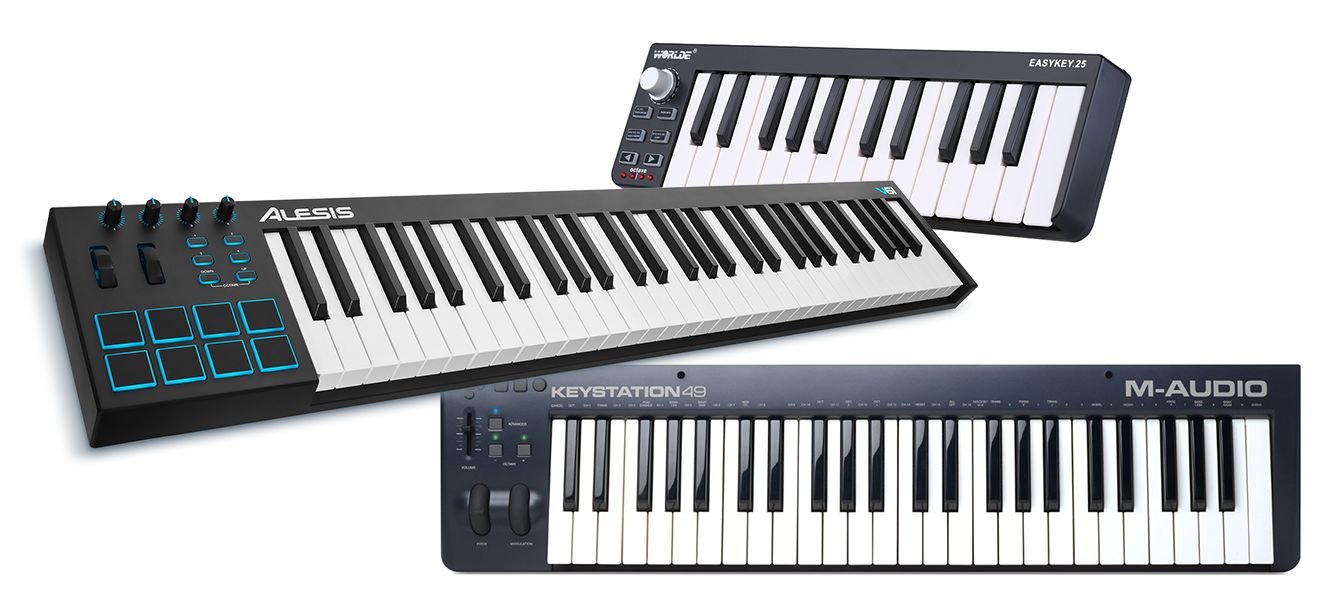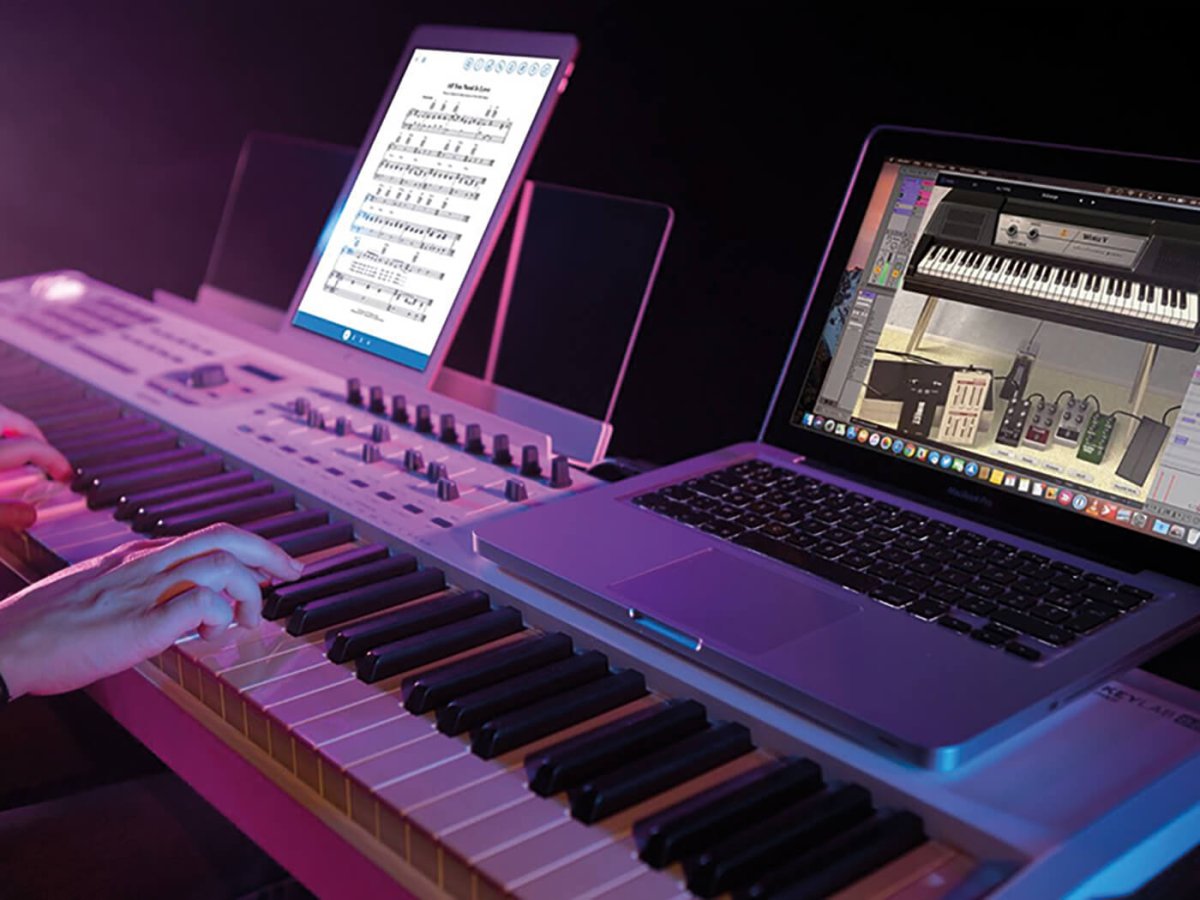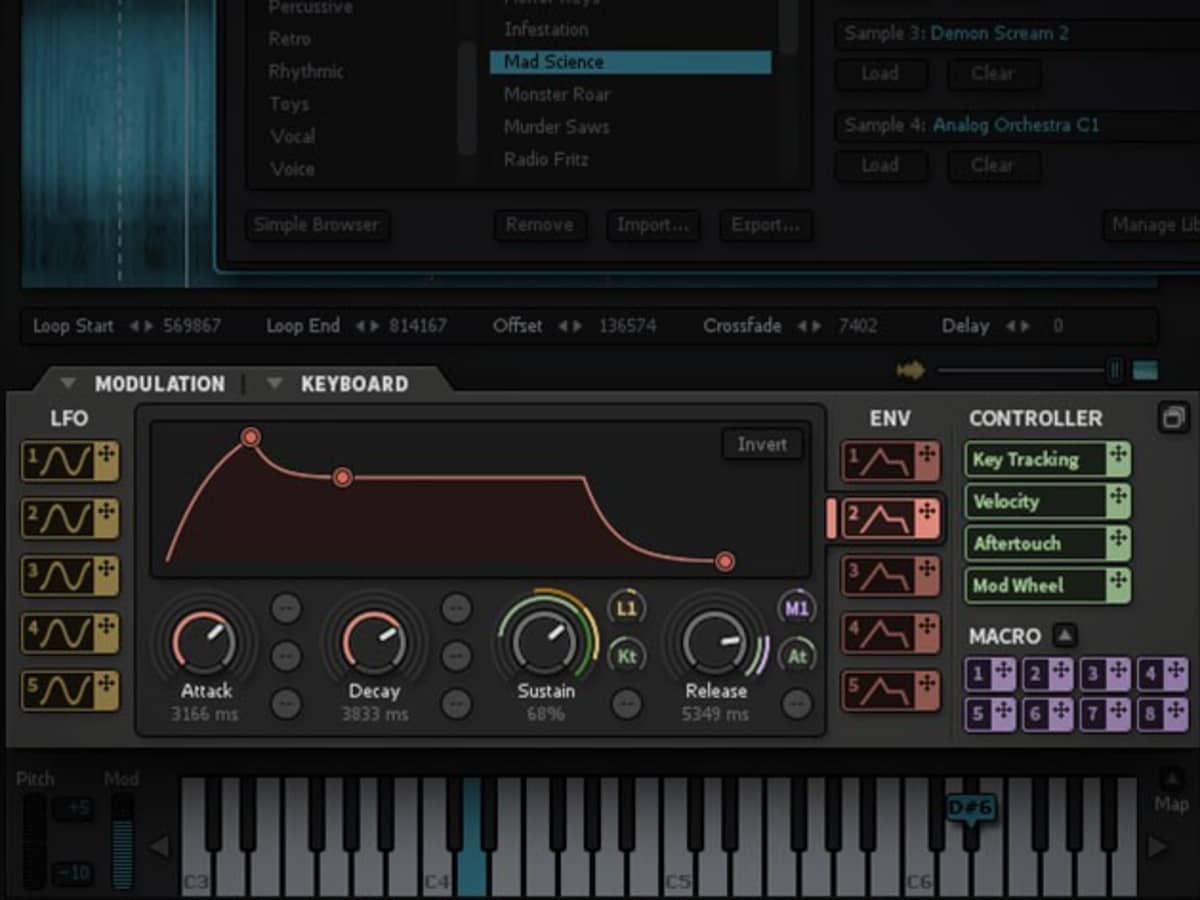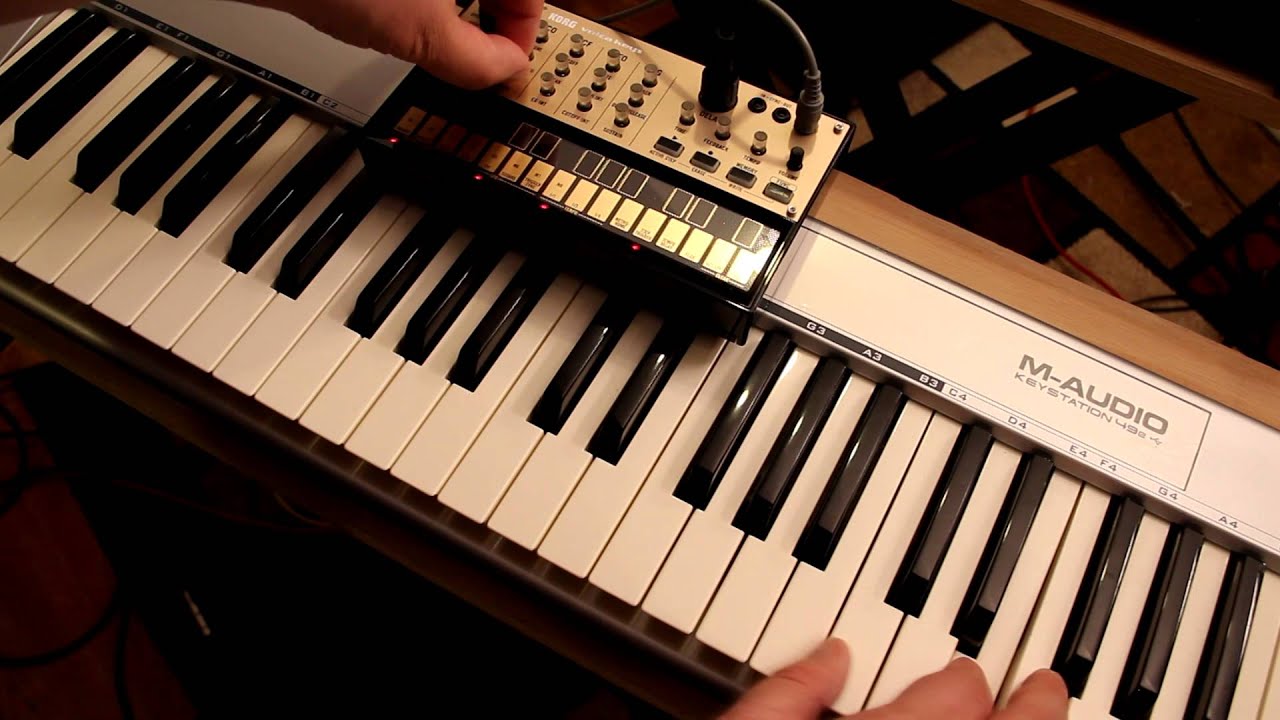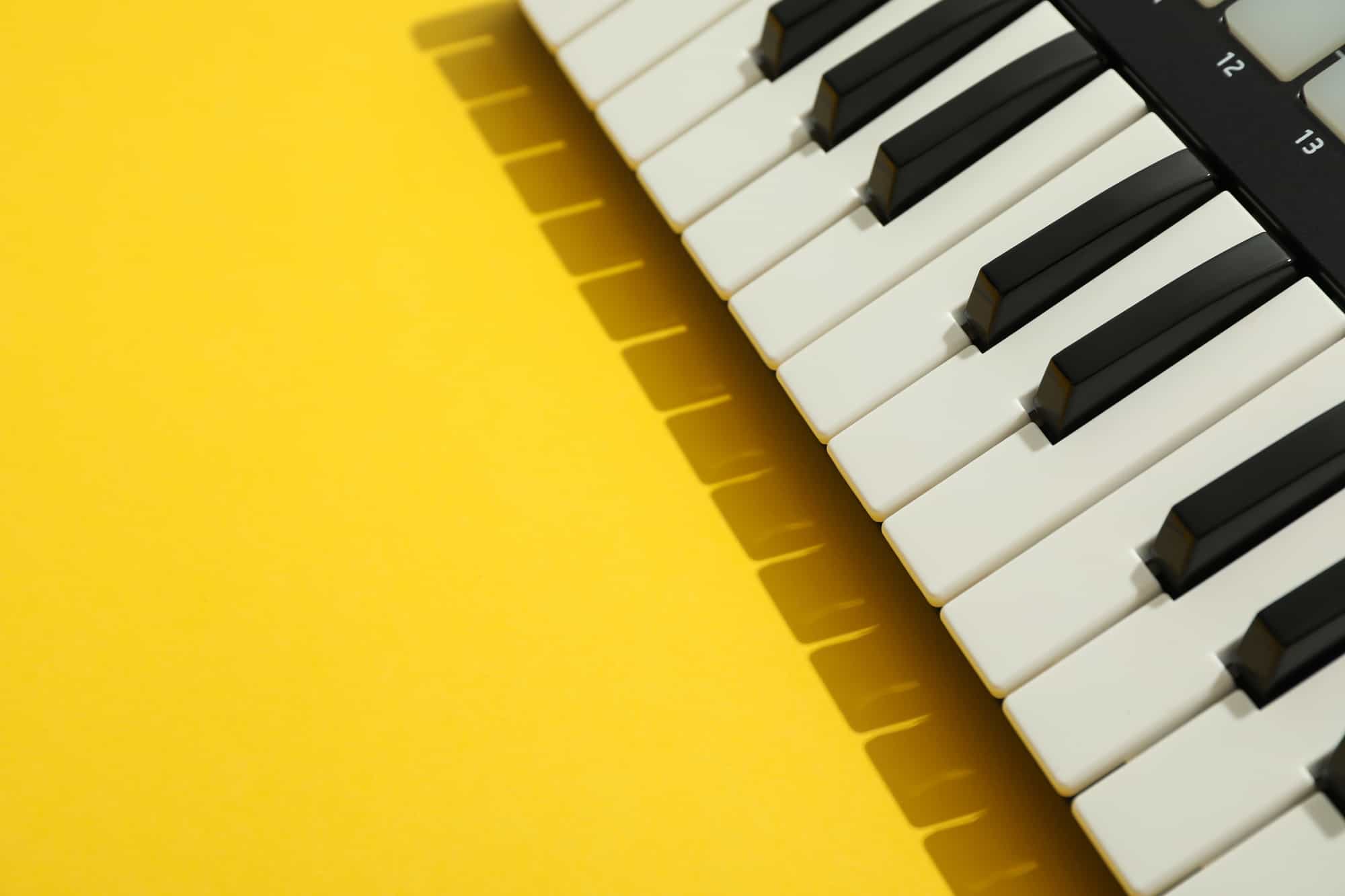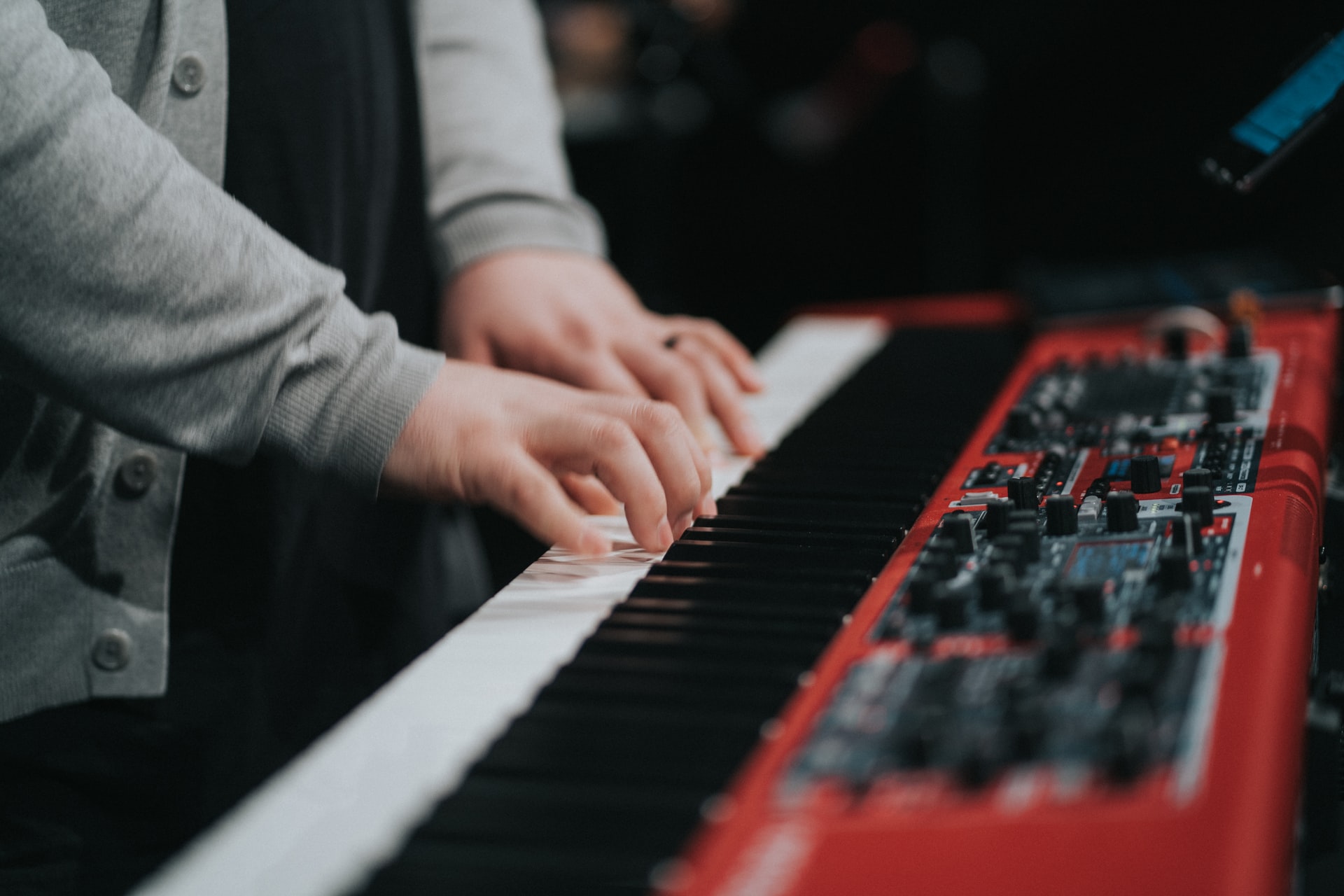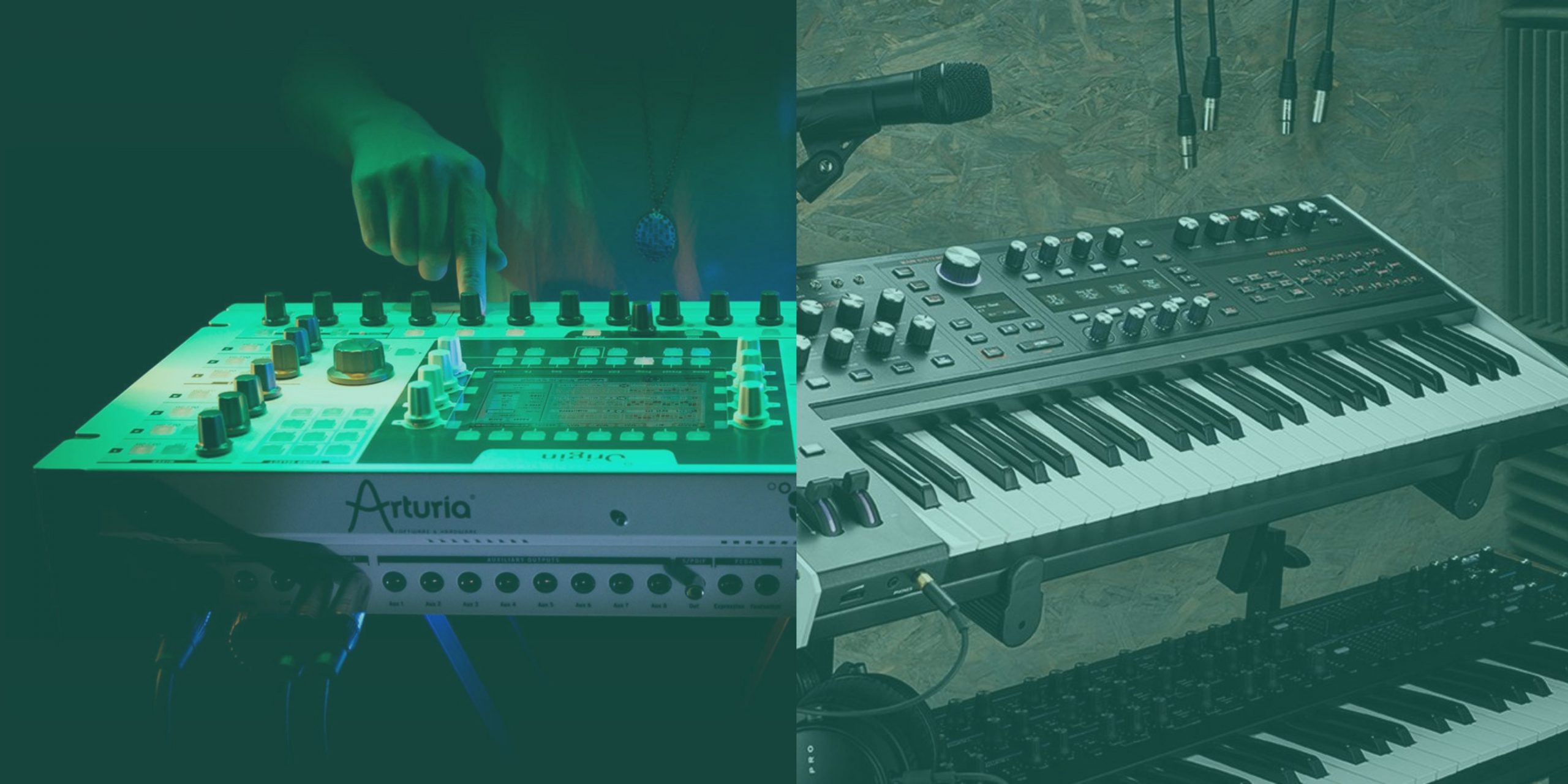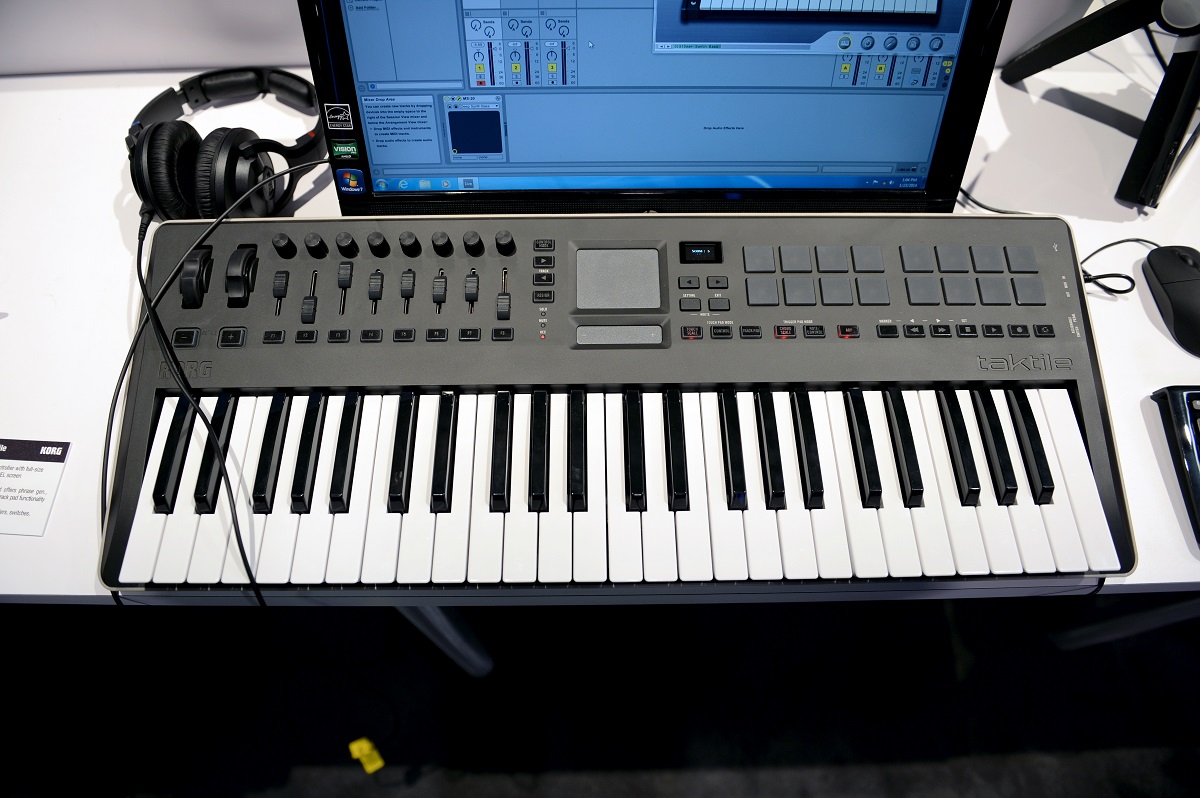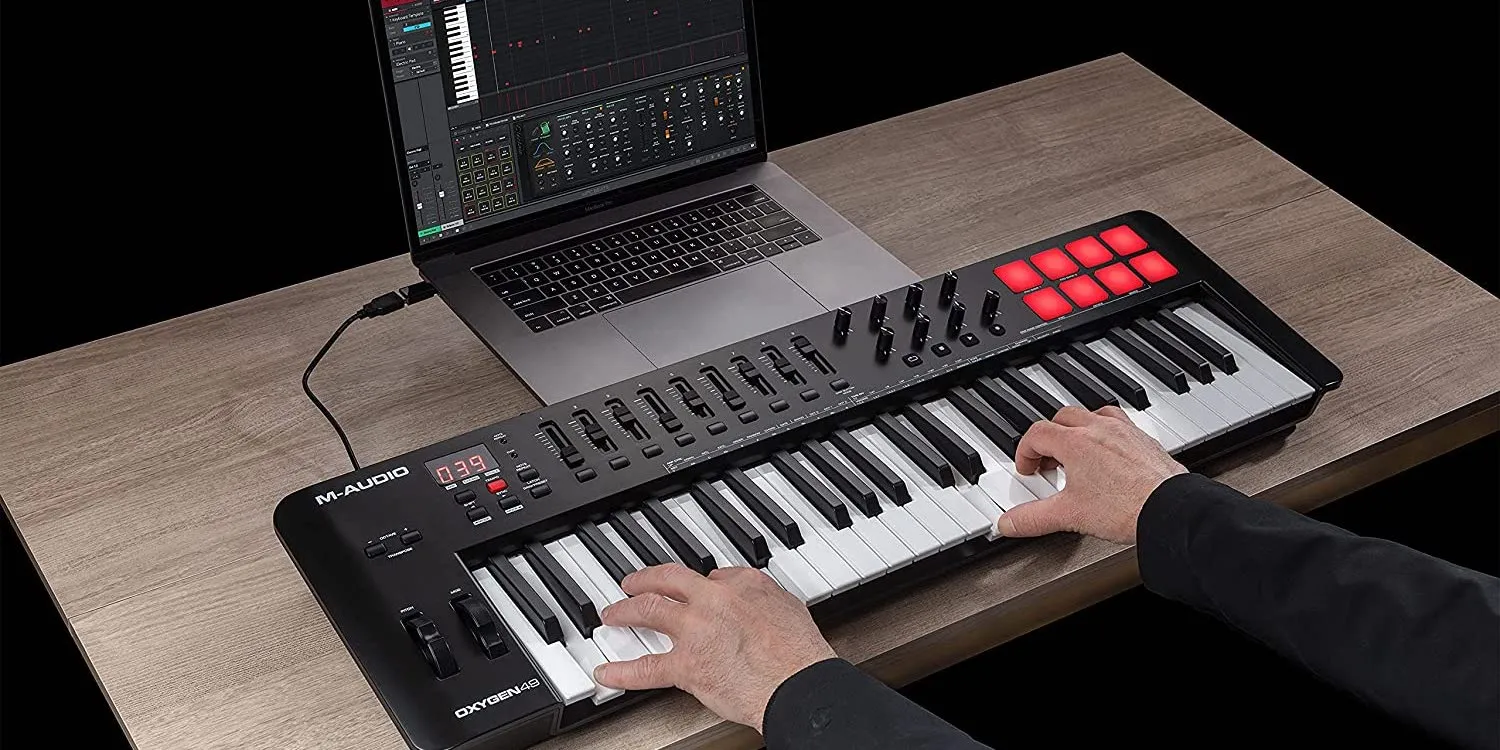Introduction
So, you've decided to take the plunge into the world of music production and are considering getting a MIDI keyboard. Congratulations! This versatile piece of equipment can open up a world of creative possibilities, whether you're a seasoned musician or just starting out. But before you start tapping away at those keys, it's important to understand what you need to get the most out of your MIDI keyboard.
In this guide, we'll walk you through the essential components and accessories required to set up and make the most of your MIDI keyboard. From the keyboard itself to the software and peripherals, we'll cover everything you need to get started on your musical journey. Whether you're a solo artist, a producer, or a composer, having the right gear and setup can make all the difference in your creative process.
So, let's dive in and explore the key elements you'll need to complement your MIDI keyboard and unleash your musical potential. Whether you're looking to create electronic music, record live instruments, or control your DAW with more expression and nuance, understanding the essentials will set you on the right path to musical fulfillment. Let's get started!
MIDI Keyboard
A MIDI keyboard, also known as a controller keyboard, is the central piece of equipment in your music production setup. It resembles a traditional piano keyboard but is equipped with additional features that allow it to communicate with other electronic music devices, such as computers, synthesizers, and sound modules.
When choosing a MIDI keyboard, consider factors such as the number of keys, key action (weighted, semi-weighted, or synth action), and additional controls such as knobs, faders, and pads. The number of keys typically ranges from 25 to 88, with 49 and 61-key options being popular choices for both beginners and experienced musicians.
Key action refers to the feel and response of the keys. Weighted keys simulate the feel of an acoustic piano, making them ideal for pianists and keyboardists, while synth action keys are lighter and more suitable for electronic music production and performance. Semi-weighted keys strike a balance between the two.
Additionally, many MIDI keyboards feature assignable controls such as knobs, faders, and pads, which can be used to manipulate various aspects of your music, from adjusting volume and effects to triggering samples and loops. These controls can greatly enhance your creativity and workflow, allowing for more expressive and dynamic performances.
Some MIDI keyboards also come with built-in sounds and drum pads, making them standalone instruments for live performances and studio work. Whether you opt for a compact, portable MIDI keyboard for on-the-go music creation or a larger, more feature-packed model for your studio setup, choosing a keyboard that suits your specific needs and preferences is crucial.
Ultimately, the MIDI keyboard serves as the primary interface between you and your music production environment, offering a tactile and intuitive way to input musical notes and control various parameters within your digital audio workstation (DAW) or music software.
Computer or Mobile Device
One of the fundamental components to complement your MIDI keyboard is a computer or mobile device. These devices serve as the hub for running digital audio workstations (DAWs), software instruments, and music production applications, allowing you to harness the full potential of your MIDI keyboard.
A computer, whether it’s a desktop or a laptop, provides the processing power and storage capacity necessary for music production. When selecting a computer, consider factors such as CPU speed, RAM, and storage space. A multi-core processor and ample RAM are beneficial for running resource-intensive music production software smoothly, while a solid-state drive (SSD) can significantly improve loading times and overall system responsiveness.
For those who prefer a more portable setup, a mobile device such as a tablet or smartphone can also serve as a viable platform for music production. Many music production apps and DAWs are available for iOS and Android devices, offering a wide range of features and tools for creating music on the go. With the increasing power and capabilities of mobile devices, it’s now possible to achieve professional-level music production using compact and lightweight hardware.
Regardless of whether you choose a computer or a mobile device, it’s essential to ensure compatibility with your MIDI keyboard and music production software. Most MIDI keyboards connect to computers and mobile devices via USB, allowing for seamless integration and communication. Additionally, some MIDI keyboards offer Bluetooth connectivity, further expanding the compatibility options for mobile devices.
Whether you opt for a dedicated music production workstation or a portable setup centered around a mobile device, having a reliable and capable computer or mobile device is crucial for realizing the creative potential of your MIDI keyboard and taking your music production endeavors to new heights.
DAW (Digital Audio Workstation) Software
Once you have your MIDI keyboard and computer or mobile device in place, the next essential component for your music production setup is a Digital Audio Workstation (DAW) software. A DAW serves as the central environment for recording, editing, arranging, and mixing music, providing a comprehensive suite of tools and features to bring your musical ideas to life.
When choosing a DAW, consider factors such as workflow, available features, compatibility, and user interface. There are several popular DAWs on the market, each offering unique strengths and capabilities to cater to different musical styles and production requirements. Some well-known DAWs include Ableton Live, Logic Pro, FL Studio, Pro Tools, and Reaper, among others.
Many modern DAWs are equipped with MIDI recording and editing capabilities, allowing you to capture and manipulate MIDI data from your keyboard with precision and flexibility. This includes recording note sequences, adjusting velocities, adding expression through modulation and pitch bend, and quantizing performances for tight rhythmic precision.
Furthermore, DAWs often feature virtual instruments and synthesizers, enabling you to expand your sonic palette by integrating software-based sounds and samples with your MIDI keyboard. These instruments can range from realistic emulations of acoustic instruments to cutting-edge electronic and experimental sounds, providing endless creative possibilities for your music production endeavors.
Additionally, DAWs offer a wide array of audio effects, mixing tools, and automation capabilities, allowing you to sculpt and refine your musical compositions with professional polish and precision. From EQ and compression to reverbs, delays, and modulation effects, DAWs provide a comprehensive toolkit for shaping the sonic character of your music.
With its role as the centerpiece of your music production workflow, the DAW software plays a pivotal role in integrating your MIDI keyboard, virtual instruments, and audio processing tools into a cohesive and expressive platform for creating music. By selecting the right DAW that aligns with your creative vision and production requirements, you can unlock the full potential of your MIDI keyboard and embark on a fulfilling musical journey.
MIDI Cables or USB Cable
Connecting your MIDI keyboard to your computer or mobile device requires the appropriate cables to facilitate communication and data transfer. Depending on the type of MIDI keyboard and the connectivity options available, you’ll need to use either MIDI cables or a USB cable to establish the connection.
MIDI cables are a traditional method of connecting MIDI devices, including keyboards, synthesizers, and sound modules, to external hardware or computer interfaces. These cables transmit MIDI data, which includes note information, control messages, and other performance data, using a standardized protocol. MIDI cables are equipped with 5-pin DIN connectors, with one end plugged into the MIDI OUT port of the keyboard and the other end connected to a MIDI interface or MIDI IN port on an audio interface or computer.
On the other hand, many modern MIDI keyboards come equipped with USB connectivity, allowing for direct connection to a computer or mobile device without the need for MIDI cables. A USB cable serves a dual purpose, providing both power and data transmission between the keyboard and the connected device. This streamlined approach simplifies the setup process and eliminates the need for additional MIDI interfaces or specialized hardware.
When using a USB connection, it’s important to ensure that the MIDI keyboard is compatible with your computer or mobile device’s operating system. Most MIDI keyboards are designed to be plug-and-play, meaning they can be recognized by the connected device without the need for additional drivers or software installation. This seamless integration streamlines the setup process and allows you to start making music without unnecessary technical hurdles.
Whether you opt for MIDI cables or a USB cable to connect your MIDI keyboard, ensuring a reliable and stable connection is essential for seamless communication between the keyboard and your music production setup. By selecting the appropriate cables based on your MIDI keyboard’s connectivity options and your preferred setup configuration, you can establish a robust and efficient link for unleashing your creativity and musical expression.
Power Supply or Batteries
Ensuring that your MIDI keyboard is powered and ready for use is a crucial consideration in your music production setup. Depending on the specific model of your MIDI keyboard, you may need to provide power through a dedicated power supply or rely on battery power for untethered operation.
Many MIDI keyboards come with the option to be powered by an AC adapter or power supply, which is typically included with the keyboard. This method of powering the keyboard ensures consistent and reliable operation without the need to monitor battery levels or replace batteries frequently. When using a power supply, it’s important to verify that the voltage and polarity requirements match those specified by the manufacturer to avoid potential damage to the keyboard.
Alternatively, some MIDI keyboards are designed to operate on battery power, offering portability and the flexibility to create music in various environments without being constrained by the availability of power outlets. Battery-powered MIDI keyboards are especially popular among musicians who perform live or prefer to work in locations where access to electrical outlets may be limited.
When using battery power, it’s advisable to use high-quality rechargeable batteries to minimize ongoing costs and reduce environmental impact. Additionally, keeping spare batteries on hand ensures uninterrupted music creation sessions, particularly during live performances or extended recording sessions.
For MIDI keyboards that offer both power supply and battery power options, it’s beneficial to have the flexibility to switch between the two based on your specific needs and the operating conditions. Whether you’re setting up a permanent studio workstation or taking your music production on the road, having a reliable power source for your MIDI keyboard is essential for maintaining a seamless and uninterrupted creative workflow.
Sustain Pedal
Enhancing the expressive capabilities of your MIDI keyboard, a sustain pedal is a valuable accessory that mimics the functionality of a traditional piano pedal, allowing for sustained notes and creating a more dynamic and nuanced musical performance. The sustain pedal, also known as a damper pedal, is a staple component in many keyboardists’ setups, providing greater control over the articulation and phrasing of musical passages.
When connected to a MIDI keyboard, the sustain pedal enables players to sustain notes and chords, adding richness and depth to their performances. By holding down the pedal while playing, sustained notes continue to ring out, creating a seamless and connected sound that enhances the overall musical expression. Releasing the pedal at the appropriate moment allows for natural decay and articulation of the sustained notes.
Additionally, the sustain pedal can be used to create expressive and emotive performances, allowing for subtle changes in dynamics and phrasing. By modulating the pedal’s pressure and timing, musicians can infuse their playing with a greater sense of emotion and musicality, adding a human touch to their digital performances.
Many MIDI keyboards feature a dedicated input for connecting a sustain pedal, providing seamless integration and compatibility. It’s important to select a sustain pedal that is designed to work with MIDI keyboards and offers a responsive and reliable performance. Some sustain pedals feature polarity switches to accommodate different keyboard models, ensuring proper functionality and compatibility.
Whether you’re playing classical piano pieces, creating lush ambient textures, or adding expressive flourishes to your compositions, the sustain pedal serves as a versatile tool for shaping the musical narrative. Its ability to extend and manipulate the duration of notes and chords provides a level of control and expression that is essential for capturing the nuances of live performance and infusing your music with depth and emotion.
Headphones or Speakers
Choosing the right monitoring solution is paramount in ensuring an immersive and accurate listening experience while using your MIDI keyboard. Whether you opt for headphones or speakers, the decision can significantly impact the way you perceive and interact with your music, ultimately influencing the quality of your productions.
Headphones offer a direct and intimate listening experience, allowing you to focus on the intricate details of your music without external distractions. They provide isolation from ambient noise, making them ideal for critical listening and detailed sound design. When selecting headphones, consider factors such as frequency response, impedance, comfort, and closed-back or open-back design. Closed-back headphones offer isolation and are suitable for tracking and monitoring in noisy environments, while open-back headphones provide a more natural and spacious sound for mixing and mastering applications.
Alternatively, studio monitors, also known as speakers, offer a more spatial and room-filling listening experience, providing a sense of depth and stereo imaging that can be essential for accurate mixing and sound placement. Studio monitors come in various configurations, including near-field and mid-field designs, and are essential for creating a balanced and cohesive soundstage in your music production environment. When choosing studio monitors, factors such as frequency response, power handling, room acoustics, and placement considerations are crucial for achieving an accurate and reliable listening environment.
Both headphones and studio monitors play a vital role in the music production process, and the choice between the two often comes down to personal preference, workflow, and the specific requirements of your creative space. Some musicians and producers prefer the immersive and detailed sound of headphones for precision editing and sound sculpting, while others rely on the spatial accuracy and natural sound reproduction of studio monitors for mixing and evaluating their music in a room environment.
Ultimately, the selection of headphones or studio monitors should align with your production goals and the sonic characteristics you aim to achieve in your music. Whether you’re crafting intricate soundscapes, recording live instruments, or mixing and mastering your tracks, having a reliable and transparent monitoring solution is essential for making informed decisions and creating music that resonates with your artistic vision.







